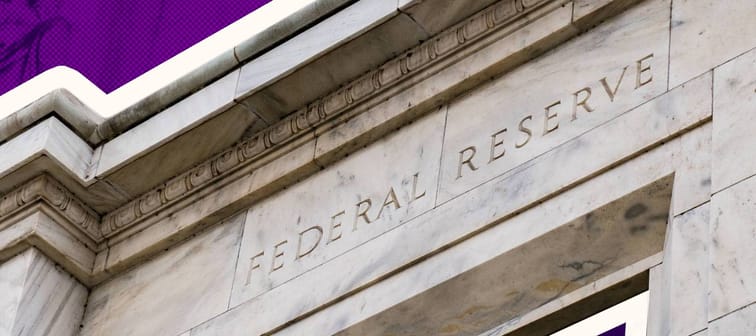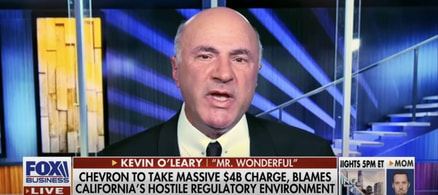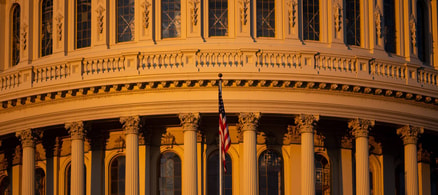Why has the Fed raised rates again?
This is still the beginning; the Fed is expected to raise interest rates up to five times more this year.
The Fed first raised rates by a modest quarter-point in March. At that point, consumer prices had climbed 8.5% over the prior year, the fastest increase since 1981.
More people are stressed out about inflation and the war in Ukraine than any other issue, according to a survey conducted earlier this year by the American Psychological Association and The Harris Poll.
The central bank’s benchmark rate is one of its primary tools to push back against inflation. Also known as the “federal funds rate” or the “target for the overnight rate,” it’s the interest rate banks charge each other for overnight loans so they can meet their requirements for cash on hand.
When banks pay more to borrow, they pass on those costs to their customers — not unlike what restaurants, grocery stores and gas stations have been doing since inflation started spiking.
The central bank cut its federal funds rate to near zero when the pandemic first hit, making it cheap to borrow and spend and keeping the economy churning. However, demand for consumer goods came roaring back faster than expected, and other factors like the war in Ukraine and COVID-related lockdowns in China have continued to fuel severe price hikes.
“Disruptions to supply have been larger and longer lasting than anticipated, and price pressures have spread to a broader range of goods and services,” Powell said.
“The surge in prices of crude oil and other commodities that resulted from Russia's invasion of Ukraine is creating additional upward pressure on inflation.”
The Fed is seeking to return some balance to supply and demand so inflation moderates — but not too fast that the economy falls into a recession.
Meet Your Retirement Goals Effortlessly
The road to retirement may seem long, but with WiserAdvisor, you can find a trusted partner to guide you every step of the way
WiserAdvisor matches you with vetted financial advisors that offer personalized advice to help you to make the right choices, invest wisely, and secure the retirement you've always dreamed of. Start planning early, and get your retirement mapped out today.
Get StartedAre we really at risk of a recession?
Some economists say a recession is inevitable. A new report from Deutsche Bank sees a recession hitting the U.S. in late 2023, predicting that the Fed’s moves to curb inflation will be too slow and that higher prices will persist.
“The bottom line is that while inflation may fall somewhat from its 40-year high in March, multiple factors are set to keep it elevated well above target for some time,” the investment bank’s economists write.
Powell expressed confidence in the Fed’s ability to bring down inflation by raising rates without triggering a recession, though he didn’t rule out restrictive policies if needed.
“I think we have a good chance to have a soft — or softish — landing,” he said.
About 3 out of 5 Americans are worried about their finances, according to a survey from the National Foundation for Credit Counseling and Wells Fargo.
Over a quarter of the general population are more worried about meeting basic household expenses than they were last year.
Katie Bossler, a specialist with nonprofit credit counseling agency GreenPath Financial Wellness, says writing out a plan for your finances can help you feel more in control.
“Figure out the new baseline,” Bossler says in an email. “Determine how your income is keeping up with inflation and how much your expenses have changed.”
How to save on borrowing costs
Credit cards
When the federal funds rate goes up, so do credit card rates. That’s because the interest rate on your credit card rises and falls with the prime rate, a key lending rate that piggybacks off the Fed rate.
If you’re a regular user of plastic who carries a balance, you’re paying an annual percentage rate of more than 16%, on average — and it’s about to go higher.
Keep an eye out for a notice from your credit card company, which is required to inform you 45 days before it raises your rates.
Bossler says anyone in serious debt should talk to their creditors to see if they can negotiate their balance or consider a debt management plan.
Consumers thinking about taking out new loans should make sure their credit score is strong.
“A good credit score is part of a path to get a favorable loan or line of credit — borrowing opportunities people may not otherwise be able to access,” Bossler says. “Lower interest rates are offered to people with better credit scores — that means more money staying in a person’s pocket.”
Car loans
Auto loans, too, have become more expensive.
Interest rates on used cars are already up around one percentage point this year, while new car rates are up closer to three-quarters of a point, says Jonathan Smoke, chief economist of Cox Automotive.
While it’s always a good practice to shop around for the best vehicle, it’s also smart to shop for financing, he says. Nowadays that’s easier to do because of online finance options. Borrowers can determine monthly payments, negotiate prices and can find out how much a trade is worth.
“Under the old process, you pretty much wouldn’t get to figure out what your monthly payment was until you spent hours at a dealership,” Smoke says.
As with all loans, the better your credit score, the better your interest rate. And in the new vehicle market, it’s not uncommon for buyers with the best credit to find 0% loans. In April, 6% of car deals were financed with these enviable rates, according to Smoke.
He adds that there’s a bit of good news when it comes to the used car market: Supply is back up and prices are no longer rising. New cars, however, continue to be harder to find because of supply constraints.
Mortgage rates and HELOCs
The federal funds rate helps dictate variable mortgage rates, not fixed rates, but both types of loans are getting pricier.
Paired with Wednesday’s rate hike, the Fed announced plans to begin selling off some of the billions in Treasury bonds and mortgage-backed securities it had purchased to keep longer-term interest rates low.
The average 30-year fixed mortgage rate in the U.S. hit a record low of 2.65% in January 2021. Today it’s well above 5%.
Corey Burr of TTR Sotheby's International Realty in Washington, D.C. suggests borrowers explore a 7- or 10-year adjustable-rate mortgage.
“The rate will be lower than a 30-year fixed, and I suspect the borrower will have an opportunity to refinance into a lower-rate mortgage at some point before the rate adjusts,” he said in a recent interview.
A rate hike from the Fed also impacts home equity lines of credit, loans that move in sync with the prime rate.
If you’re paying 4% on a $75,000 HELOC, your monthly interest payment is $250. If your rate goes up by 0.5%, your payment would be about $281.
Sponsored
Follow These Steps if you Want to Retire Early
Secure your financial future with a tailored plan to maximize investments, navigate taxes, and retire comfortably.
Zoe Financial is an online platform that can match you with a network of vetted fiduciary advisors who are evaluated based on their credentials, education, experience, and pricing. The best part? - there is no fee to find an advisor.






